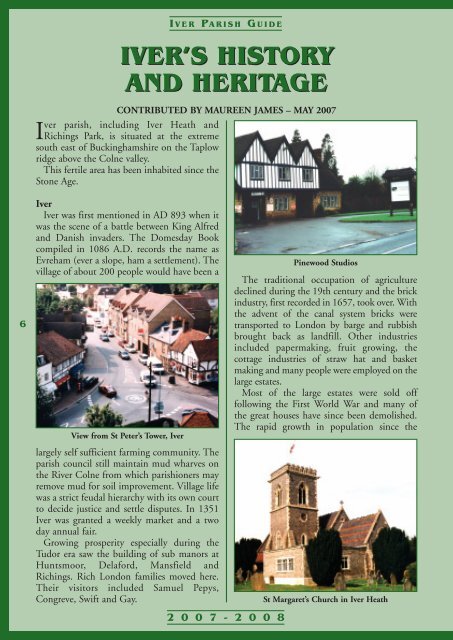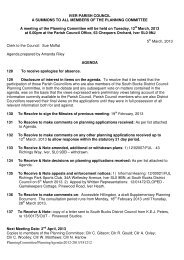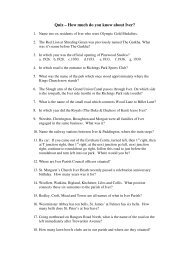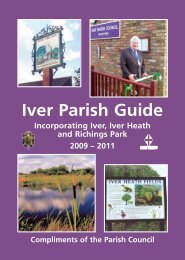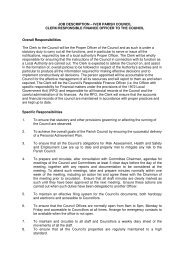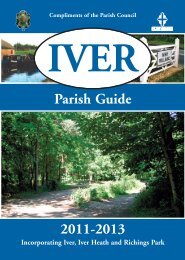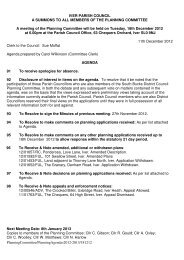Iver Parish Guide - Iver Parish Council
Iver Parish Guide - Iver Parish Council
Iver Parish Guide - Iver Parish Council
Create successful ePaper yourself
Turn your PDF publications into a flip-book with our unique Google optimized e-Paper software.
<strong>Iver</strong> <strong>Parish</strong> <strong>Guide</strong> 07-09 26/7/07 9:32 AM Page 6I VER PARISH G UIDEIVER’S HISTORYAND HERITAGECONTRIBUTED BY MAUREEN JAMES – MAY 2007<strong>Iver</strong> parish, including <strong>Iver</strong> Heath andRichings Park, is situated at the extremesouth east of Buckinghamshire on the Taplowridge above the Colne valley.This fertile area has been inhabited since theStone Age.6<strong>Iver</strong><strong>Iver</strong> was first mentioned in AD 893 when itwas the scene of a battle between King Alfredand Danish invaders. The Domesday Bookcompiled in 1086 A.D. records the name asEvreham (ever a slope, ham a settlement). Thevillage of about 200 people would have been aView from St Peter’s Tower, <strong>Iver</strong>largely self sufficient farming community. Theparish council still maintain mud wharves onthe River Colne from which parishioners mayremove mud for soil improvement. Village lifewas a strict feudal hierarchy with its own courtto decide justice and settle disputes. In 1351<strong>Iver</strong> was granted a weekly market and a twoday annual fair.Growing prosperity especially during theTudor era saw the building of sub manors atHuntsmoor, Delaford, Mansfield andRichings. Rich London families moved here.Their visitors included Samuel Pepys,Congreve, Swift and Gay.2 0 0 7 - 2 0 0 8Pinewood StudiosThe traditional occupation of agriculturedeclined during the 19th century and the brickindustry, first recorded in 1657, took over. Withthe advent of the canal system bricks weretransported to London by barge and rubbishbrought back as landfill. Other industriesincluded papermaking, fruit growing, thecottage industries of straw hat and basketmaking and many people were employed on thelarge estates.Most of the large estates were sold offfollowing the First World War and many ofthe great houses have since been demolished.The rapid growth in population since theSt Margaret’s Church in <strong>Iver</strong> Heath


